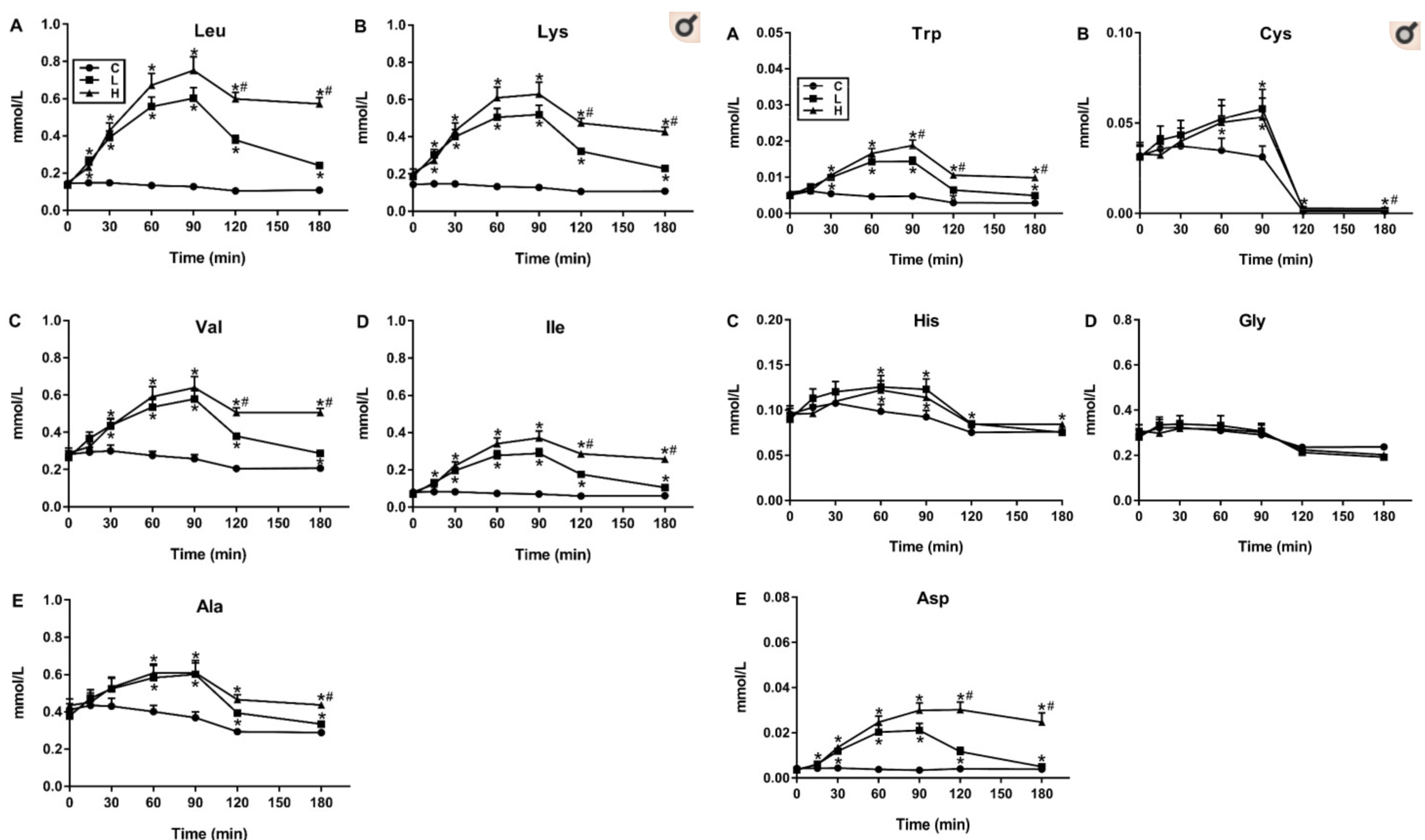Plasma Free Amino Acid Responses to Whey Protein and Their Relationships with Gastric Emptying, Blood Glucose- and Appetite-Regulatory Hormones and Energy Intake in Lean Healthy Men
by Rachel A. Elovaris Nutrients 2019, 11(10), 2465;
This study determined the effects of increasing loads of whey protein on plasma amino acid (AA) concentrations, and their relationships with gastric emptying, blood glucose- and appetite-regulatory hormones, blood glucose and energy intake. Eighteen healthy lean men participated in a double-blinded study, in which they consumed, on 3 separate occasions, in randomised order, 450-mL drinks containing either 30 g (L) or 70 g (H) of pure whey protein isolate, or control with 0 g of protein (C). Gastric emptying, serum concentrations of AAs, ghrelin, cholecystokinin (CCK), glucagon-like-peptide 1 (GLP-1), insulin, glucagon and blood glucose were measured before and after the drinks over 180 min. Then energy intake was quantified. All AAs were increased, and 7/20 AAs were increased more by H than L. Incremental areas under the curve (iAUC0–180 min) for CCK, GLP-1, insulin and glucagon were correlated positively with iAUCs of 19/20 AAs (p < 0.05).
The strongest correlations were with the branched-chain AAs as well as lysine, tyrosine, methionine, tryptophan, and aspartic acid (all R2 > 0.52, p < 0.05). Blood glucose did not correlate with any AA (all p > 0.05). Ghrelin and energy intake correlated inversely, but only weakly, with 15/20 AAs (all R2 < 0.34, p < 0.05). There is a strong relationship between gluco-regulatory hormones with a number of (predominantly essential) AAs.
However, the factors mediating the effects of protein on blood glucose and energy intake are likely to be multifactorial.














